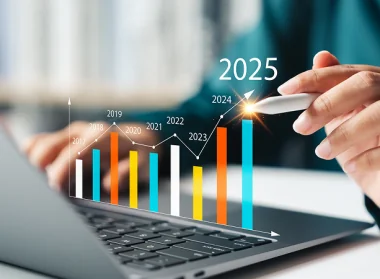Procurement is becoming a more integral part of an organization’s efforts to reduce cost and increase efficiency.
Because of this, procurement managers are under pressure to remain agile enough to move with the changes.
In the public sector, however, there are additional challenges associated with implementing changes to the procurement processes in existing operations.
In the public sector, procurement managers often have a specific procurement framework in which they are required to work – where there is typically a focus on strong moral principles, without a traditional supply chain model.
It’s also worth noting public sector procurement departments are responsible for some of the highest levels of spend in the economy, because of local, state, and federal agencies needing to purchase for public services across a number of industries, including healthcare, education, and infrastructure.
Government spending covers more than the procurement of goods and services, of course, but budgets are always an issue.
Procurement activities must operate within confines of the available funds they have to work with as well as the established procurement policy – and that means getting creative and cutting costs where possible.
Realizing Benefits from Data and Analytics
Data and analytics help you see where you’re spending money, where you’re making wise investments, and where you could be saving money.
But, because of how difficult it can be to embed new purchasing approaches, it can be hard to convince everyone that you need to start factoring in data and analytics.
Even though moving to an e-procurement system can streamline the entire process, saving time and increasing productivity in the long run, the pains of switching to an electronic system for better data and analytics can be hard to get through.
That makes it difficult to really see the benefit of making the switch.
There’s also the issue of ensuring data accuracy.
If you can’t get everyone on board with the new procedures and you’ve got people who are still buying outside of the system, then the data in the system won’t accurately reflect what’s actually going on in the organization.
This will make it hard to make data-driven decisions about anything related to procurement.
Private sector marketplaces like Amazon and eBay are great for the average everyday consumer, but don’t translate over to public sector procurement. Today’s procurement professionals want the same buying journey as the normal consumer, and sometimes more. If your system can’t provide a smooth buying experience, your data accuracy will suffer.
With a centralized system, however, it can be easier for central government departments to keep track of contract awards, tender documents, and other things they’re required to have within the legal framework.
The more information you can store in the system, the more accurate the data and the more streamlined the procurement process becomes.
Fully Realizing Benefits of Sustainable Procurement Practices
Even if you manage to convert your organization to a new, better, purchasing approach, it can still be difficult to realize the full benefits of these practices.
Everyone must be on board, or there’s potential to miss out on some of the benefits the new system has to offer.
With a centralized purchasing platform, you have a place to store product information and photos, track orders, and supplier notes, so you can keep track of who is the easiest work with.
This makes it easier to match capabilities with low cost pricing. In the end, moving to a centralized purchasing platform that allows you to automate processes will not only streamline the purchasing experience but make it easier to see the overall benefit to your organization.
Getting the Most Out of Suppliers
In government procurement, it can be difficult to find and qualify suppliers due to all the procurement regulations and compliance issues.
Even if you find a reasonable supplier (or two) to work with to meet your needs, it can be hard to maintain smooth supply chain performance, because if they run into an issue, it could trickle down and affect you.
It’s not enough to make promises. To keep the supply chain moving as smoothly as possible, you must be able to foster long-lasting relationships with your buyers, and to do this, you must be able to deliver according to customer expectations.
Yes, you want high-quality products at low costs, and it would be nice if you could get it with free next day delivery.
But, it’s important to be realistic with your suppliers, because that situation, though ideal, is not attainable.
It’s difficult, and sometimes impossible, to find a single supplier to handle multiple needs.
Be realistic with your suppliers. Understand they must make a profit to stay in business and focus on creating more efficient and effective ways to work with them, so they can offer savings in other ways.
Balancing Outsourcing with Maintaining High-Quality Internal Capacity
Sometimes it makes sense for an organization to outsource a portion of their procurement tasks to another organization or team.
The idea is that by outsourcing tasks to teams that are better equipped, you can use your freed-up resources to do things they are better suited for.
In this sense, your business excels because everything that needs to be done gets done efficiently.
However, if you outsource too much, you’re left relying on the company or team you’ve outsourced to, and there’s not much, if anything, for your internal team left to do.
Switching to an e-procurement system that allows everything to be centralized makes it easier for you to strike the right balance, because you may find you need to outsource less overall.
Building Strategies for Effective Engagement with Suppliers
Supplier relationship management is critical to the success of any organization but becomes difficult to manage if the right strategies aren’t in place.
When you add the challenges associated with governance and compliance, it makes it even more difficult.
No matter how good your procurement strategy is, it won’t matter if your supplier engagement isn’t where it should be.
If your suppliers can’t deliver your order on time, or in the requested quantity, you’ll spend more time, money, and manpower on market research and getting quotes from other vendors.
Having a centralized system in place can help you simplify the procurement process and make it more efficient, allowing you to engage with your suppliers in such a way that gets you what you need, without overburdening your supplier with tons of back and forth.
Public sector procurement has the same overall goal as private sector procurement – serve the needs of your end customer as well as possible, for the least amount of money possible.
For the private sector, it’s about making a profit, and for the government, it’s about maximizing the budget.
In either public procurement or the private sector, making the change to an electronic system that’s centralized and automated can make a big difference.




